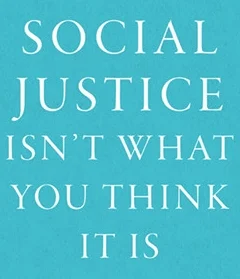The Wealth of Humans - A Review
There is little question that economic structures and human participation in economy have shifted over time. With shifts from feudalism to mercantilism to forms of capitalism to the present blend of socialism and capitalism that exist in most democratic societies today the humans engaged in the economy have adapted to the changes or fallen by the wayside.
Consider, for example, the difference between the expectations for work in the mid-Twentieth century and today. People anticipated working for the same company for the majority of their careers not too long ago. Now, it is surprising when someone stays with one employer for the duration of their working years. The tenure of some employees at many corporations is measured in months instead of years and there is no promise of a pension, only an employer match in a 401K.
Discussions of work and vocation haven’t always kept up with the shift in working conditions, which makes Ryan Avent’s recent book, The Wealth of Humans: Work, Power, and Status in the Twenty-First Century, a helpful contribution to the discussion of work and economics. Avent is a senior editor and columnist for the left leaning magazine, The Economist. As such, some of his analysis supports ideas more at home in democratic socialism than in a more consistently free market economics; there are several occasions where Avent argues for Keynesian solutions to stagnation and increases in government spending on social benefits. However, overall, Avent’s analysis of the changing workplace in the Twenty-first century is helpful and adds to the literature in the field.
Summary
Avent surveys the topic in twelve chapters in addition to the introduction. The chapters are grouped into four parts with three chapters each.
In Part One, Avent surveys the shifting employment landscape. The rise of digital technologies have served to increase productivity, which has in turn created a glut of labor. This means that many low skilled workers find themselves either automated out of work or in a precarious situation. He continues by discussing the effect of automation: the glut of labor. Avent notes that although there is a real possibility of a short term disruptions in the workforce, either opportunities will open up, people will re-tool for new careers, or some mediating stasis of working hours and income will be attained. However, the potential for a significant societal disruption exists and could be significant if society fails to make preparations for the upcoming shifts. Avent predicts wage stagnation and income inequality; he also predicts that the lower economic strata will demand a different means of wealth distribution in light of their limited opportunities.
The second part outlines the changing realities in the digital economies. With the glut of labor on the market, there is little to push wages higher, which he predicts will increasing lead to calls for government solutions. He also notes that while labor is plentiful, the contemporary marketplace has increased the value of corporate culture over machinery and other traditional capital resources.
Part three discusses some of the shifts of the digital economy. He notes that there is an increase in income inequality among individuals, which he classifies as a sort of injustice. He also argues that on an international level, there have been some nations that are seemingly perpetual winners and some seemingly consigned to a permanent developing status. Avent then argues that the digital, demand based economy leaves economic systems at risk of self-perpetuating periods of low demand, such as has been witnessed in the slow-recovery after the recent Great Recession. His solution to this problem, consistent with his Keynsian presuppositions, is an increase in government spending and stacking on national debt. He does, however, recognize some of the ways government interventions have increased the recent economic turmoil.
The fourth part discusses the economic and political problems of the digital revolution. He discusses the increasingly popular solution for redistribution of a government facilitated Universal Basic Income. He argues that such a solution is unlikely to success in the longterm, and that work has value for enhancing a human sense of wellbeing. He rightly recognizes that the problems of income and economic inequality relate not simply to wealth, but also to social structures and attitudes. Economic contentedness depends as much on the definition of the good life as the actual income. He also notes that the economic conditions and growing instability and insecurity present and opportunity for both the radical left and right to provide populist solutions to problems; a reality that is being realized in the U.S. and in the U.K. among other nations. He concludes the section rather inconclusively with an expectation that some sort of seismic shift will occur, though he doesn’t know exactly what. Given the complexity of predicting the future, this is probably a fair way to end.
Analysis and Conclusion
Overall, Avent’s arguments and analysis are well thought out and nuanced. He avoids simplistic analysis and one size fits all solutions. Though he begins from a Keynsian foundation, he remains critical of certain typical aspects of that system. This is, overall, a well reasoned and informative book.
In particular, his recognition that work is not merely a way to put bread on the table, but a part of having human agency, of feeling valued, and of contributing to society is healthy. Where some who predict the coming disruption of the digital economy see Universal Basic Income as a silver bullet solution, Avent recognizes there are significant flaws in that as a final solution.
Whatever your preference for economic systems, Avent’s book is worth the time to read. He argues carefully, presents his case clearly, and acknowledges basic truths about human nature.
Note: I received a gratis copy of this volume with no expectation of a positive review.




















